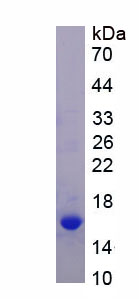Recombinant Low Density Lipoprotein Receptor Related Protein 1 (LRP1)
CD91; LRP; A2MR; APOER; APR; TGFBR5; Alpha-2-Macroglobulin Receptor; Prolow-density lipoprotein receptor-related protein 1; Apolipoprotein E receptor
- Product No.RPB010Hu01
- Organism SpeciesHomo sapiens (Human) Same name, Different species.
- SourceProkaryotic expression
- HostE.coli
- Endotoxin Level<1.0EU per 1µg (determined by the LAL method)
- Subcellular LocationMembrane, Nucleus
- Predicted Molecular Mass13.0kDa
- Accurate Molecular Mass16kDa(Analysis of differences refer to the manual)
- Residues & TagsVal4441~Ala4544 with N-terminal His Tag
- Buffer FormulationPBS, pH7.4, containing 0.01% SKL, 5% Trehalose.
- Traits Freeze-dried powder
- Purity> 90%
- Isoelectric Point5.8
-
Applications
Positive Control; Immunogen; SDS-PAGE; WB.
If bio-activity of the protein is needed, please check active protein. - DownloadInstruction Manual
- UOM 10µg50µg 200µg 1mg 5mg
- FOB
US$ 136
US$ 340
US$ 680
US$ 2040
US$ 5100
For more details, please contact local distributors!
SEQUENCE

USAGE
Reconstitute in 10mM PBS (pH7.4) to a concentration of 0.1-1.0 mg/mL. Do not vortex.
STORAGE
Avoid repeated freeze/thaw cycles. Store at 2-8°C for one month. Aliquot and store at -80°C for 12 months.
STABILITY
The thermal stability is described by the loss rate. The loss rate was determined by accelerated thermal degradation test, that is, incubate the protein at 37°C for 48h, and no obvious degradation and precipitation were observed. The loss rate is less than 5% within the expiration date under appropriate storage condition.
GIVEAWAYS
INCREMENT SERVICES
-
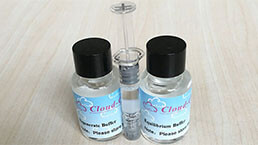 Endotoxin Removal Kit
Endotoxin Removal Kit
-
 BCA Protein Quantification Kit
BCA Protein Quantification Kit
-
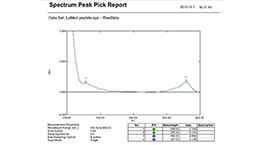 Protein Labeling Customized Service
Protein Labeling Customized Service
-
 Molecular Mass Marker for Protein
Molecular Mass Marker for Protein
-
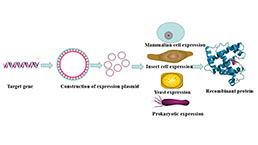 Recombinant Protein Customized Service
Recombinant Protein Customized Service
-
 Monoclonal Antibody Customized Service
Monoclonal Antibody Customized Service
-
 Polyclonal Antibody Customized Service
Polyclonal Antibody Customized Service
-
 Protein Activity Test Experiment Service
Protein Activity Test Experiment Service
-
 Immunoprecipitation (IP) Experiment Service
Immunoprecipitation (IP) Experiment Service
-
 Buffer
Buffer
-
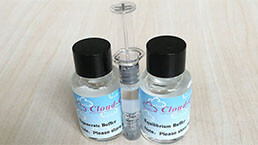 Endotoxin Removal Kit II
Endotoxin Removal Kit II
-
 Real Time PCR Experimental Service
Real Time PCR Experimental Service
-
 Spike RBD Protein (S-RBD)
Spike RBD Protein (S-RBD)
-
 Protein G
Protein G
-
 Protein A
Protein A
| Magazine | Citations |
| European Journal of Vascular and Endovascular Surgery | Plasma Low-density Lipoprotein Receptor-related Protein 1 Concentration is not Associated with Human Abdominal Aortic Aneurysm Presence Science: Article |
| Int J Cardiol | Circulating soluble low-density lipoprotein receptor-related protein 1 (sLRP1) concentration is associated with hypercholesterolemia: A new potential biomarker for atherosclerosis PubMed: 26285183 |
| International Journal of Cardiology | Circulating levels of soluble low-density lipoprotein receptor-related protein 1 (sLRP1) as novel biomarker of epicardial adipose tissue pubmed:27543712 |
| Journal of Cellular and Molecular Medicine | Extracellular vesicles do not contribute to higher circulating levels of soluble LRP1 in idiopathic dilated cardiomyopathy doi:10.1111 |
| Scientific Reports | Soluble LRP1 is an independent biomarker of epicardial fat volume in patients with type 1 diabetes mellitus Pubmed:29348672 |
| Atherosclerosis | Soluble low-density lipoprotein receptor-related protein 1 as a biomarker of coronary risk: Predictive capacity and association with clinical events |
| Biomedical Reports | Gender difference and genetic variance in lipoprotein receptor‑related protein 1 is associated with mortality |
| biorxiv. | CMTM6 drives cisplatin resistance in OSCC by regulating AKT mediated Wnt signaling |
| JCI Insight | CMTM6 drives cisplatin resistance by regulating Wnt signaling through ENO-1/AKT/GSK3¦Â axis 33434185 |



